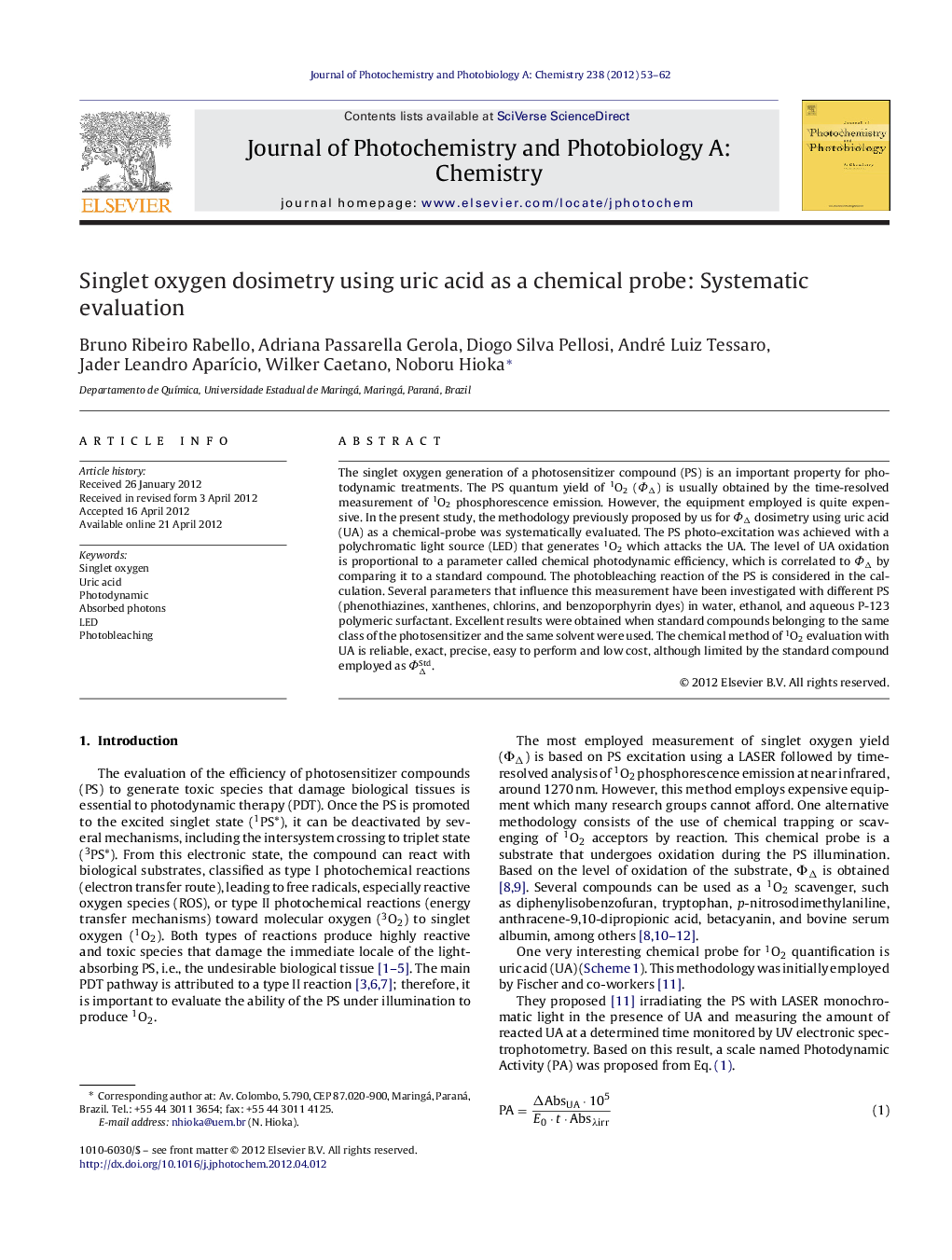| Article ID | Journal | Published Year | Pages | File Type |
|---|---|---|---|---|
| 28165 | Journal of Photochemistry and Photobiology A: Chemistry | 2012 | 10 Pages |
The singlet oxygen generation of a photosensitizer compound (PS) is an important property for photodynamic treatments. The PS quantum yield of 1O2 (ΦΔ) is usually obtained by the time-resolved measurement of 1O2 phosphorescence emission. However, the equipment employed is quite expensive. In the present study, the methodology previously proposed by us for ΦΔ dosimetry using uric acid (UA) as a chemical-probe was systematically evaluated. The PS photo-excitation was achieved with a polychromatic light source (LED) that generates 1O2 which attacks the UA. The level of UA oxidation is proportional to a parameter called chemical photodynamic efficiency, which is correlated to ΦΔ by comparing it to a standard compound. The photobleaching reaction of the PS is considered in the calculation. Several parameters that influence this measurement have been investigated with different PS (phenothiazines, xanthenes, chlorins, and benzoporphyrin dyes) in water, ethanol, and aqueous P-123 polymeric surfactant. Excellent results were obtained when standard compounds belonging to the same class of the photosensitizer and the same solvent were used. The chemical method of 1O2 evaluation with UA is reliable, exact, precise, easy to perform and low cost, although limited by the standard compound employed as ΦΔStd.
► Yield quantum singlet oxygen of photosensitizers was obtained by chemical dosimeter. ► The PS photo-excitation was achieved with a polychromatic light source. ► Photobleaching reaction of the PS is considered in the calculation. ► The results were dependent of the standard and the solvent.
